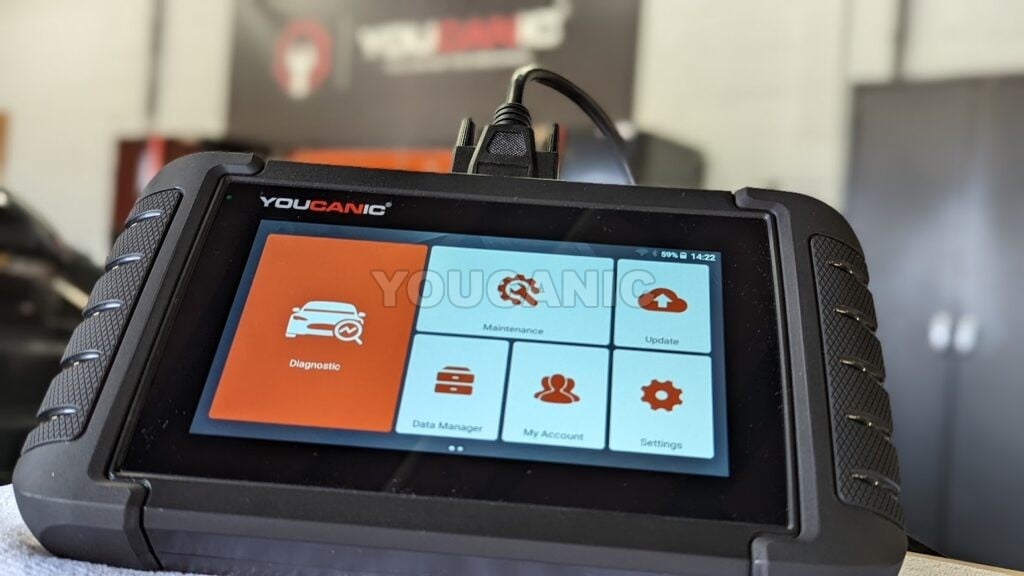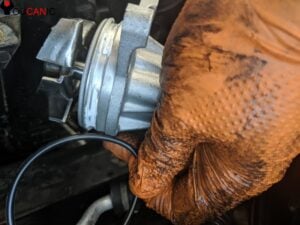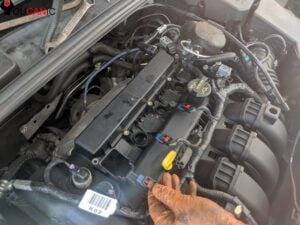Read & Clear Check Engine Light Codes
Checking the check engine codes is very simple, and you can read the codes yourself using an OBD-II scanner. You will find the diagnostic port right under the dashboard on the driver’s side. This guide provides instructions on using a generic OBD II scanner to scan and clear check engine light codes.
How to Read Check Engine Codes
Below is a demonstration of how to read and clear fault codes and monitor Emission control devices’ readiness using an OBD-II scanner.
If you want a multi-system scanner that can read every vehicle’s control module, use the YOUCANIC Full System Scanner. Most generic OBD-II Scanners can’t read and clear codes on other control modules.

Procedures for reading and clearing check engine codes.
- Plug the scanner on and turn on the ignition. Location of the OBD-II (OBD2) port on a Volkswagen Jetta Golf GTI Beetle Routan Tiguan.
Press ENTER on the OBD-II scanner.
The scanner would go through different protocols to find the correct communication protocol to communicate with your ECM.
Once communication is established, a screen will show the summary of fault codes found (DTC). You should pay attention to the item “Readiness Not Completed,” the value should be zero. If it is more than zero, it means that one or more test has not been executed, Or one or more codes has been erased. This may cause your vehicle to fail an emission inspection.
Press okay to go to the Diagnostic Menu; this will redirect you to another screen with menu options like “Read Codes,” “Erase Codes,” ECU, or ECM live data monitoring.
To read codes, in Diagnostic Menu, choose “Read Codes” and press ok. There will be a next screen with the title “DTC” that will display all the fault codes and a description of the code. These codes will be displayed one page at a time. You may want to research the code for your specific car model to pinpoint the problem accurately.
Press the right button to navigate to the next trouble code.
Press escape once to go back to the Diagnostic menu or multiple times to the main menu.
Once the problem is fixed, you can erase the code; you can repeat steps 1 to 4 then choose to Erase Codes, press ok, and press ok again on the next prompt to confirm code erasure. Note: Erasing the codes without fixing the problem would cause the code to re-appear, thus turning your check engine light back on.
Once you have the code, write it down and visit our Diagnostic Trouble Code Database to learn what each code means.
Check if the vehicle will pass Emission Test
To pass the emission test, your check engine light must be off, and the system should show OK or N/A. If INC (incomplete) shows on the scanner, you will not be able to pass the emission test.
- Repeat steps 2-4 on the section “Procedures for reading and clearing codes,” then in the Diagnostic Menu, choose I/M Readiness and press OK.
- If you have erased the codes, you may go to the “Since DTCs Were Cleared ” and press ok.
- Navigate thru the “I/M Readiness” list by using the arrow down key and verify that no list item has a Not Ready status. Note: If any list item has a “Not Ready” status, you may not pass the emission test.
Frequently Asked Questions
Does the car have to be running to use the OBD-II Scanner?
Always turn the ignition on or have the car running according to the instructions in the manual. Failure to do this might corrupt the scanning software.
What vehicles are OBD II compliant?
1996 or newer model year vehicle sold in the United States. United States legislation requires all cars and light trucks model year (MY) 1996 and newer to be OBD2 compliant.
2001 or newer model year gasoline vehicle sold in the European Union.
2004 or newer model year diesel vehicle sold in the European Union.
How can I check my car code?
You can check the codes in your car using an OBD-II scanner plugged in under the dashboard and driver’s side.
Where can I get engine codes to read for free?
You can get your codes to read for free at auto parts stores such as AutoZone or Advance Auto Parts.
How can I read my car code without a scan tool?
For most cars, you need an OBD-II scanner to read the codes.
The early internal combustion engines were tough and rugged, but fuel efficiency and performance are very low. To solve this, Engineers have hooked up an onboard computer to the engine to control efficiency and performance. With the help of sensors, which feed real-time data to the onboard computer, the Engineers were very successful.
However, additional sensors mean additional failure points; as a result, troubleshooting would become a nightmare for mechanics or technicians.
To solve the problem, the Engineers have designed Onboard diagnostics dubbed OBD-I. To access the error codes, the mechanic would short a terminal and count the blinks of the check engine light, then match the count to an error code chart. This was okay but still very hard to comprehend for most mechanics.
The car modules have multiplied ever since, and it would be very challenging to count the blinks, so the engineers have designed a new Onboard Diagnostics that requires a scanner or a code reader to extract the codes. This new technology is called OBD2 or OBD-II.
Conclusion
Hundreds of possible problems can cause the check engine light on a car. The most common issues are spark plugs, oxygen sensors, and catalytic converter failure. Instead of guessing what is wrong, use an OBD-II scanner to read the fault codes.
We hope you find the Read & Clear Check Engine Light Codes guide helpful. Check these troubleshooting and repair guides for more help on your vehicle.









